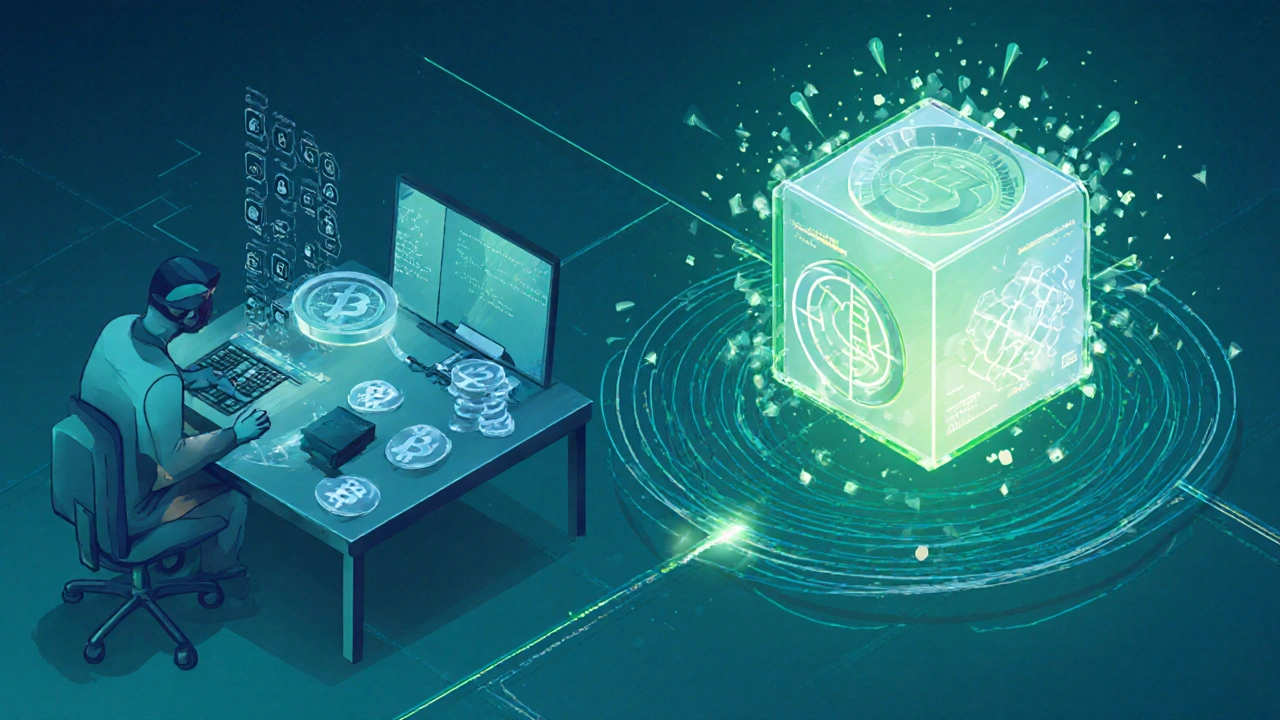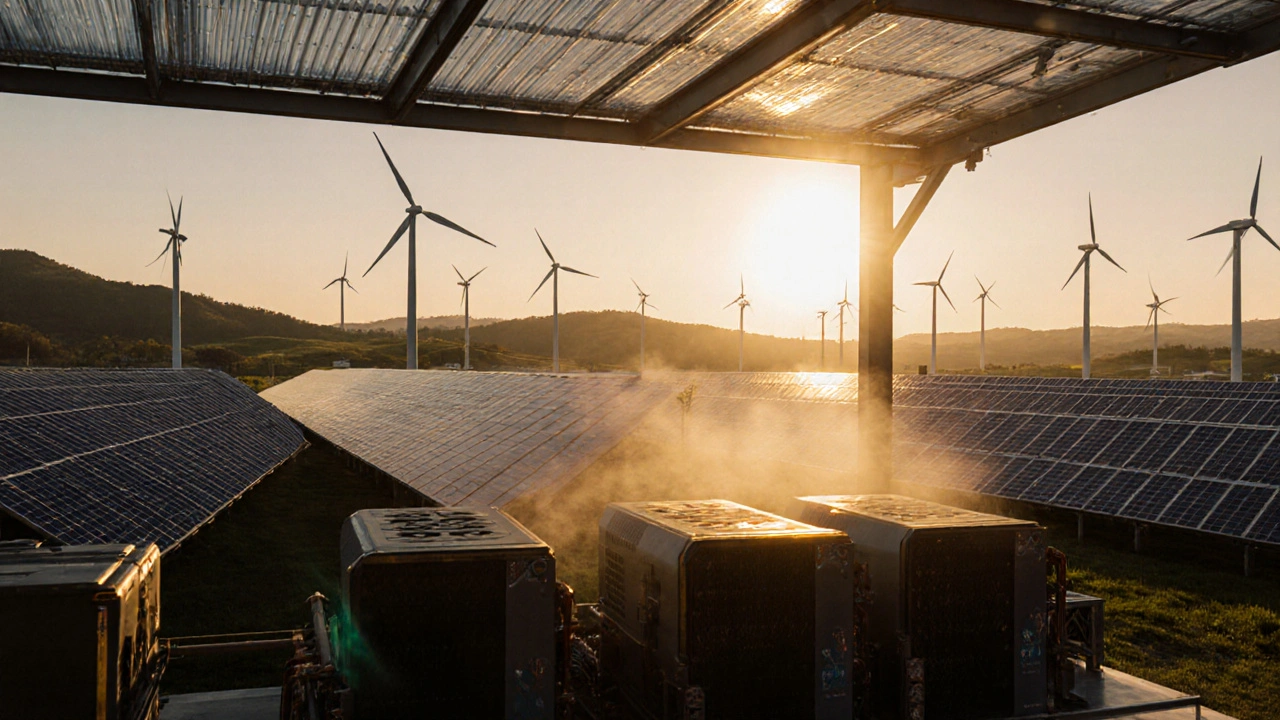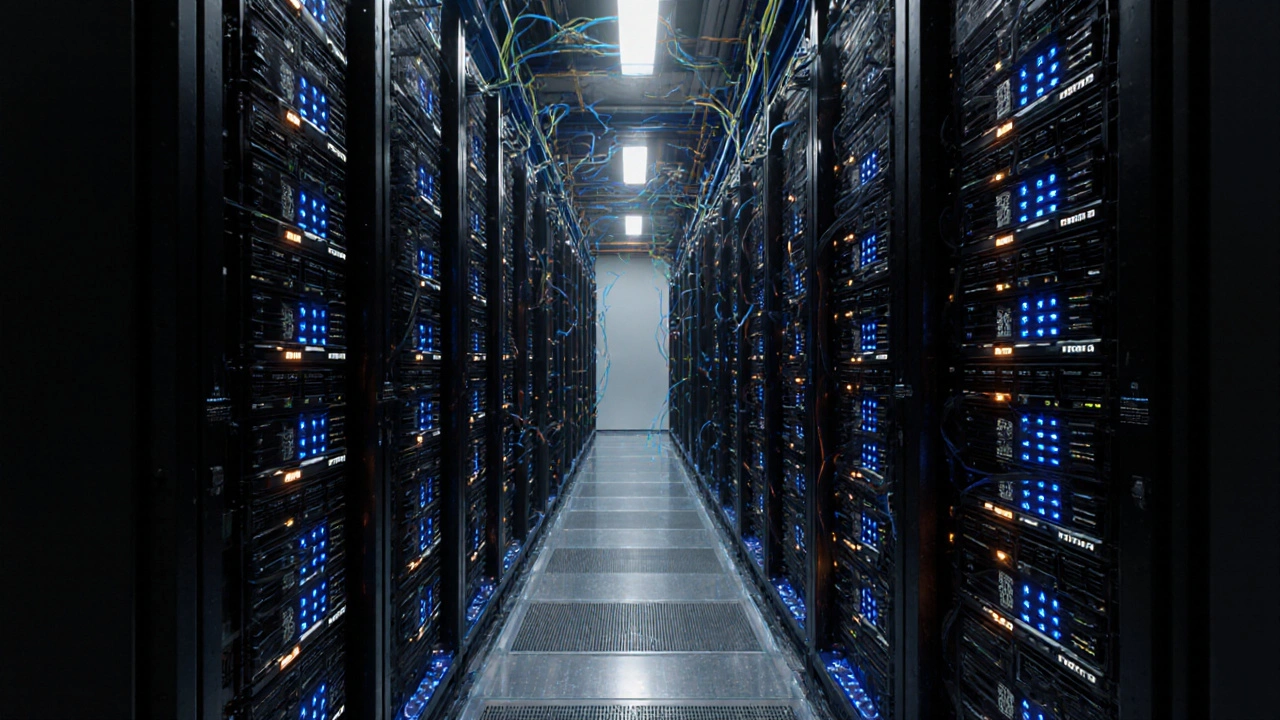Key Takeaways
- Bitcoin mining secures the network by solving cryptographic puzzles called Proof of Work.
- Miners bundle transactions into blocks, and each successful block adds new BTC as a reward.
- Specialized hardware - ASICs - dominate modern mining because they deliver massive hash rates with lower energy per hash.
- Profitability depends on hash rate, electricity cost, mining difficulty, and the current BTC price.
- Environmental impact is tied to energy source; renewable‑powered farms can reduce the carbon footprint.
When people first hear about Bitcoin mining is the process of validating transactions and adding new blocks to the Bitcoin blockchain using computational power, they picture rows of humming machines. The reality is a blend of cryptography, economics, and engineering. Below we break down each piece so you can see how a single hash contributes to a global network worth billions.
What Exactly Is Bitcoin Mining?
At its core, bitcoin mining is the act of solving a mathematical puzzle called Proof of Work (a consensus mechanism that requires miners to perform computational work to propose a new block). The puzzle isn’t about cleverness; it’s about brute‑force. Miners repeatedly hash a block header until the resulting number is lower than a target set by the network. That target adjusts every 2016 blocks (roughly two weeks) to keep the average block time near ten minutes.
How a Block Is Created
Every ten minutes, the network expects a new Block (a collection of Bitcoin transactions that, once validated, becomes part of the immutable ledger). Here’s the flow:
- Transactions broadcast by users gather in a pool called the mempool.
- A miner selects transactions, often prioritizing those with higher Transaction fee (the optional payment users attach to encourage faster inclusion in a block).
- The miner constructs a block header, which includes the previous block’s hash, a timestamp, a Merkle root (a single hash summarizing all transactions), and a Nonce (a 32‑bit number miners tweak to change the block hash).
- The miner runs the header through the SHA‑256 hash function billions of times per second, seeking a hash lower than the current target.
- When a miner finally hits the target, the block is broadcast. Other nodes instantly verify the hash and, if correct, add the block to their copy of the blockchain.
Hardware Evolution: From CPUs to ASICs
The first miners used ordinary desktop CPUs (Central Processing Units, the general‑purpose chips in computers). As difficulty rose, enthusiasts switched to GPUs, which excel at parallel calculations. Today, the market is dominated by ASIC miners (Application‑Specific Integrated Circuits built solely for Bitcoin's SHA‑256 algorithm). An ASIC can deliver terahashes per second (TH/s) while consuming far less electricity per hash than a GPU.

Measuring Performance: Hash Rate and Difficulty
The speed at which a miner can try different nonces is called its Hash rate (the number of SHA‑256 calculations performed each second, usually expressed in TH/s for Bitcoin). The network’s total hash rate, summed across all miners, determines how quickly blocks are found. To keep block times stable, the protocol adjusts Difficulty (a scalar that defines how low a block hash must be to be accepted). Higher difficulty means more hashes are required on average, which in turn pushes miners to seek more efficient hardware or cheaper electricity.
Rewards, Fees, and Profitability
When a miner successfully adds a block, they receive two income streams:
- Block reward (newly minted bitcoins awarded for creating a block; currently 6.25BTC and halved roughly every four years).
- All Transaction fees (the sum of fees attached to each transaction in the block) collected from users.
Profitability calculators typically factor in:
- Hash rate of the mining rig.
- Power consumption (watts) and local electricity price (USD/kWh).
- Current BTC price.
- Network difficulty and expected block reward.
If revenue exceeds electricity and hardware depreciation, the operation makes money; otherwise, it runs at a loss. Because Bitcoin’s price is volatile, many miners hedge with futures or hold a portion of earnings in stablecoins.
Environmental Impact and Energy Sources
Mining’s huge electricity demand has sparked debate. A single modern ASIC farm can consume megawatts, comparable to a small town. The key factor is the energy mix. Facilities powered by hydro, wind, or solar can achieve a low carbon intensity, while those relying on coal‑fired plants face criticism. Some leading mining pools now publish real‑time energy source data to prove sustainability.
Comparing Mining Hardware Options
| Hardware | Typical Hash Rate (TH/s) | Power Consumption (W) | Efficiency (J/TH) | Up‑front Cost (USD) |
|---|---|---|---|---|
| ASIC (e.g., Antminer S19 Pro) | 110 | 3250 | 29.5 | 2,500 |
| GPU (8 × RTX 3080) | 0.0005 | 1,600 | 3,200,000 | 2,000 |
| CPU (Intel i9‑13900K) | 0.00002 | 250 | 12,500,000 | 600 |
The table makes it clear why ASICs dominate Bitcoin mining: they deliver orders of magnitude more hash power per watt and per dollar spent.

Common Pitfalls and How to Avoid Them
- Ignoring electricity rates: Even a modest increase can turn profit into loss. Always calculate cost per kWh before buying hardware.
- Underestimating cooling: ASICs generate a lot of heat. Without proper ventilation or liquid cooling, hardware lifespan drops sharply.
- Neglecting difficulty spikes: After a major price rally, difficulty often jumps, eroding margins. Consider scaling gradually.
- Regulatory surprises: Some jurisdictions ban or heavily tax mining. Check local regulations before setting up a farm.
Getting Started: A Quick Checklist
- Choose a location with low, stable electricity and good ventilation.
- Purchase a reputable ASIC model (e.g., Bitmain S19 series).
- Set up a mining pool account to combine hash power and receive steady payouts.
- Configure your miner’s firmware with your pool’s URL, worker name, and password.
- Monitor hash rate, temperature, and power draw using the miner’s web interface.
- Use a profitability calculator to track ROI and adjust settings as needed.
Future Outlook: What’s Next for Bitcoin Mining?
The next major shift will likely be the wider adoption of renewable energy agreements. Some large farms are already signing power‑purchase contracts with solar farms, locking in low‑cost, green electricity for decades. On the technical side, advances in chip fabrication (e.g., 3‑nm ASICs) could push efficiency below 20J/TH, further squeezing out GPU‑based attempts.
Meanwhile, the protocol itself may evolve. Proposals like “Taproot” have already improved transaction privacy and scripting capabilities, indirectly affecting mining economics. Any change that alters transaction volume or fee structure will ripple through miners’ revenue models.
Frequently Asked Questions
What is the difference between mining solo and joining a pool?
Solo mining means you try to find blocks on your own; payouts are rare but full. Pool mining combines many miners’ hash power, so you receive smaller, more frequent rewards proportional to your contribution.
How often does mining difficulty change?
Every 2016 blocks, roughly every two weeks, the network recalculates difficulty to keep the average block time around ten minutes.
Can I mine Bitcoin with a regular laptop?
Technically you can, but the hash rate is so low that electricity costs will far exceed any possible reward. ASICs are the only practical solution.
What happens to the block reward over time?
The reward halves every 210,000 blocks (about four years). It started at 50BTC, dropped to 25, then 12.5, and is now 6.25BTC. The next halving is expected in 2028.
Is Bitcoin mining legal everywhere?
Regulations vary. Some countries welcome mining, offering tax incentives; others restrict or ban it due to energy concerns. Always check local laws before starting.

